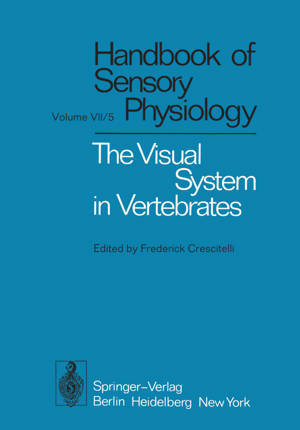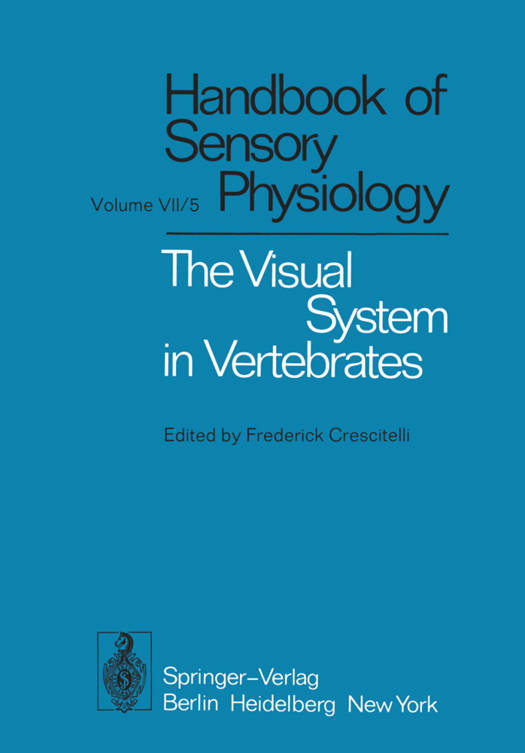
- Afhalen na 1 uur in een winkel met voorraad
- Gratis thuislevering in België vanaf € 30
- Ruim aanbod met 7 miljoen producten
- Afhalen na 1 uur in een winkel met voorraad
- Gratis thuislevering in België vanaf € 30
- Ruim aanbod met 7 miljoen producten
Zoeken
The Visual System in Vertebrates
Paperback | Engels | Handbook of Sensory Physiology | Autrum,H.(Eds):Hdbk Sens.Physiology Vol 7 | nr. 7
€ 158,45
+ 316 punten
Omschrijving
The vertebrate eye has been, and continues to be, an object of interest and of inquiry for biologists, physicists, chemists, psychologists, and others. Quite apart from its important role in the development of ophthalmology and related medical disciplines, the vertebrate eye is an exemplar of the ingenuity of living systems in adapting to the diverse and changing environments in which vertebrates have evolved. The wonder is not so much that the visual system, like other body systems, has been able to adapt in this way, but rather that these adaptations have taken such a variety of forms. In a previous volume in this series (VII/I) Eakin expressed admiration for the diversity of invertebrate photoreceptors. A comparable situation exists for the vertebrate eye as a whole and one object of this volume is to present to the reader the nature of this diversity. One result of this diversification of ocular structures and properties is that the experimental biologist has available a number of systems for study that are unique or especially favorable for the investigation of particular questions in visual science or neurobiology. This volume includes some examples of progress made by the use of such specially selected vertebrate systems. It is our hope that this comparative approach will continue to reveal new and useful preparations for the examination of important questions.
Specificaties
Betrokkenen
- Uitgeverij:
Inhoud
- Aantal bladzijden:
- 815
- Taal:
- Engels
- Reeks:
- Reeksnummer:
- nr. 7
Eigenschappen
- Productcode (EAN):
- 9783642664700
- Verschijningsdatum:
- 21/11/2011
- Uitvoering:
- Paperback
- Formaat:
- Trade paperback (VS)
- Afmetingen:
- 170 mm x 244 mm
- Gewicht:
- 1297 g

Alleen bij Standaard Boekhandel
+ 316 punten op je klantenkaart van Standaard Boekhandel
Beoordelingen
We publiceren alleen reviews die voldoen aan de voorwaarden voor reviews. Bekijk onze voorwaarden voor reviews.










